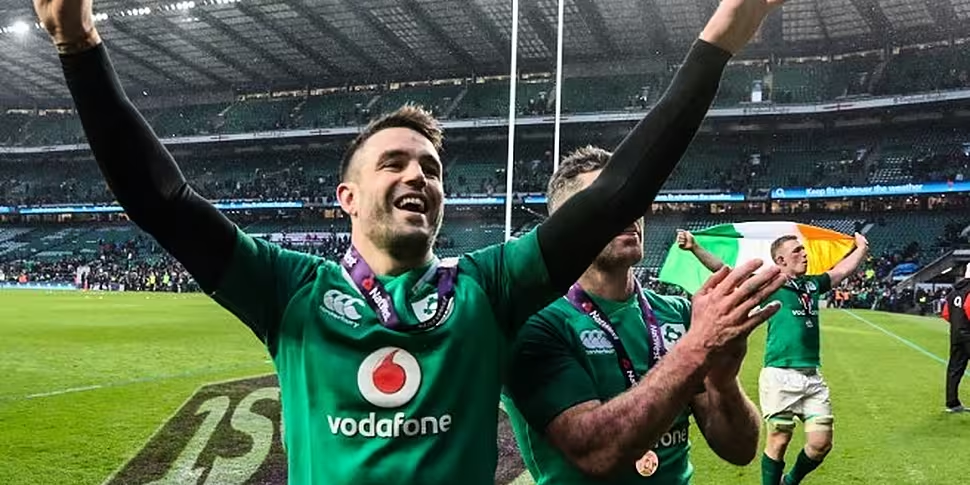The 2009 Grand Slam ended with a match winning drop-goal. The 2018 version began with one.
After the euphoria of the last 24 hours, it’s hard to believe this Grand Slam journey very nearly broke down before it hit the open road.
In the days that followed Johnny Sexton’s monstrous drop-goal in Paris, many people hinted that the nature of the win against the French would stand to them as the tournament progressed.
That win was littered with errors, but as the tournament moved on game by game, Ireland got better and better. As it should be, their best performance was the one that mattered most.
Aside from the Italy rout, the remaining games all contained stages when Ireland found themselves on the ropes, but their ability to ride out those moments, and land devastating counter-punches, can’t be understated. Of the 160 points they scored in their title run, 31 of those came when the clock was in the red.
Against Wales, Bundee Aki’s try on the stroke of half time handed Ireland the lead at a crucial stage. Jacob Stockdale’s intercept with the final play of the game denied Wales a losing bonus point. Two weeks later against Scotland, it was another Stockdale try that put Ireland two scores in front, with the half time whistle imminent. The Ulster winger’s seventh and final try of an incredible campaign came yesterday at Twickenham. Again the clock was red. Sexton’s conversion put Ireland 14 in front.
That made it three games in a row where they went into the dressing room at half time on the back of a crucial try, bursting with confidence. On the flip side, their opponents were stewing on it for a quarter of an hour. Crucial blows at crucial stages, a hallmark of champions.
Another important aspect of their attacking play was how it came in bursts. On several occasions they soaked up pressure, before cranking up the heat in 10 or 15 minute bursts. Against Italy, they crossed the line three times in 11 first half minutes. Just 13 first half minutes separated three of their tries against Wales and they then hit Scotland for tries either side of the half time break. It left opponents stunned. They’d been drawn in and over committed, and as soon as they showed a weakness they were punished by Ireland.
Had Sean O’Brien been fit, we mightn’t have seen much of Dan Leavy in a green shirt this spring. However, the Leinster flanker was a revelation in the seven shirt, capping it off with his best performance to date at Twickenham. Add in Jacob Stockdale, James Ryan, Jordan Larmour and Andrew Porter who saw far more Six Nations minutes than they probably would have expected. It may be 18 months out from the World Cup, but it’s hard to look at the 2018 campaign, without thinking ahead to the tournament in Japan.
Probably the biggest criticism against the Irish rugby team has been their inability to transfer Six Nations form into a World Cup, or to bring out a big performance when it’s needed, in a game that really matters.
Yesterday’s win against England was a statement. When the pressure was on, the players stood up and delivered in spades. England may have finished fifth in the championship table, but threw everything they had at Ireland, and were mush improved from the team beaten in Paris a week earlier.
A lot can change in 18 months, and you can expect England to have rebuilt themselves in time for the tournament in Japan, but if Ireland find themselves in a quarter final next year in the far east, they can look back at yesterday’s Grand Slam victory, and draw confidence from the fact that they have the players who can do it when it matters most.














